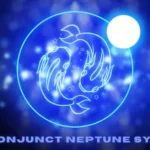Step into a world shrouded in mystery and folklore, where the tales of Örviri echo through the ages. Join us on a journey to unravel the enigmatic origins and enduring significance of Örviri. From myth to reality, let’s delve deep into this captivating legend that continues to captivate hearts and minds around the globe.
The Legend of Örviri: Myth or Reality?
Step into the mysterious world of Örviri, where legend and reality intertwine in a captivating narrative that has intrigued generations. Tales of Örviri have been passed down through centuries, whispered around campfires and immortalized in ancient texts.
Some believe Örviri to be a mythical figure, a symbol of strength and resilience. Others swear by encountering the enigmatic being in remote forests or ethereal dreams, blurring the lines between folklore and truth.
The ambiguity surrounding Örviri’s existence only adds to its allure, sparking debates among scholars and enthusiasts alike. Is Örviri merely a product of imagination or a tangible presence shrouded in mystery?
Regardless of where you stand on this enigma, one thing remains certain – the legend of Örviri continues to captivate minds and inspire curiosity across cultures and time periods.
Uncovering the Origins of Örviri
Have you ever wondered about the mysterious origins of Örviri? The enigmatic figure whose presence has transcended time and space, captivating the hearts and minds of many. Legends speak of a being with extraordinary powers, shrouded in mystery and magic. But where did Örviri truly come from?
Some believe that Örviri was born from the depths of ancient folklore, a symbol of strength and resilience in times of adversity. Others speculate that Örviri is a manifestation of nature itself, embodying the elements in their purest form. Regardless of these theories, one thing remains certain – Örviri’s origins are as elusive as they are intriguing.
As we delve deeper into the roots of Örviri, we uncover layers of symbolism and meaning woven into its existence. Perhaps Örviri represents our innate desire for connection to something greater than ourselves or serves as a reminder of our interconnectedness with the natural world.
The quest to unravel the origins of Örviri continues to intrigue scholars and enthusiasts alike, sparking conversations about identity, culture, and heritage along the way. What do you think lies at the heart of Örviri’s origins?
Common Misconceptions about Örviri
There are many misconceptions surrounding Örviri that have been passed down through generations. One common misconception is that Örviri is just a fictional character created for entertainment purposes. However, Örviri has deep roots in cultural traditions and beliefs.
Another misconception is that Örviri is solely associated with negative energies or dark magic. In reality, Örviri represents a balance between light and shadow, embodying both positive and negative aspects of human nature.
Some may believe that practicing rituals related to Örviri will bring about harm or misfortune. On the contrary, these practices are meant to invoke introspection, healing, and spiritual growth.
It’s important to not dismiss Örviri as mere superstition but rather appreciate the symbolism and wisdom embedded in its lore. By understanding the true essence of Örviri, we can gain a deeper appreciation for its cultural significance and relevance in today’s society.
Cultural Significance and Practices related to Örviri
In many cultures, Örviri holds a special place as a symbol of protection and guidance. From ancient rituals to modern ceremonies, Örviri is revered for its wisdom and mystical powers.
People often incorporate Örviri into their daily lives through talismans or amulets believed to bring good fortune and ward off evil spirits. It is not uncommon for individuals to seek the wisdom of Örviri in times of uncertainty or difficulty.
Practices related to Örviri vary across different regions but share a common thread of respect and reverence for this enigmatic figure. Some communities hold annual festivals dedicated to honoring Örviri’s legacy, while others pass down stories and traditions from generation to generation.
The cultural significance of Örviri transcends time and continues to play a vital role in shaping beliefs and customs around the world. Whether viewed as myth or reality, the influence of Örviri remains deeply ingrained in many societies.
Modern Day Adaptations and Interpretations of Örviri
In today’s modern world, Örviri’s continues to captivate and inspire individuals across various cultures. Its enigmatic origins have sparked a wave of reinterpretations and adaptations that resonate with contemporary audiences. Artists, writers, and creators have embraced Örviri’s as a symbol of resilience, transformation, and the enduring power of myth.
From literature to art installations, Örviri’s has found new life in the digital age through innovative storytelling techniques and interactive experiences. Virtual reality platforms transport users into the mystical realm of Örviri’s, allowing them to immerse themselves in its rich tapestry of legends and folklore.
Social media influencers have also taken up the mantle by integrating Örviri’s themes of courage and self-discovery into their content. Through hashtags and challenges inspired by Örviri’s journey, they encourage their followers to embark on their own quests for personal growth.
Örviri’s timeless appeal lies in its ability to evolve with the times while remaining rooted in ancient wisdoms. As we navigate the complexities of our modern existence, Örviri’s serves as a beacon of hope and inspiration for those seeking meaning amidst chaos.
Conclusion: The Enduring Legacy of Örviri in Today’s Society
The enduring legacy of Örviri’s continues to captivate and inspire individuals in today’s society. As we delve into its origins, myths, and cultural significance, it becomes evident that Örviri’s holds a special place in the hearts of many. Whether viewed as a mythical figure or a historical reality, Örviri’s story serves as a reminder of the power of storytelling and tradition.
From ancient rituals to modern adaptations, Örviri’s influence can be seen in various aspects of art, literature, and culture. The tales surrounding Örviri’s have stood the test of time, transcending generations and connecting people through shared narratives.
As we reflect on the rich tapestry of folklore and beliefs woven around Örviri’s, we are reminded of the importance of preserving our heritage and embracing our cultural roots. In a world constantly evolving with new technologies and trends, Örviri’s stands as a symbol of resilience and continuity.
May Örviri’s legacy continue to endure for years to come, inspiring curiosity and wonder in those who seek to unravel its mysteries. Let us cherish this timeless tale that reminds us of our past while guiding us towards an enlightened future.
FAQs
Q: What does “Örviri’s” mean?
Ans: “Örviri’s” is a term that has garnered speculation. Some consider it to hold a hidden significance, while others view it as a product of creative imagination, lacking a specific meaning.
Q: In which languages does “Örviri’s” appear?
Ans: “Örviri’s” is observed in multiple languages, adding to the intrigue surrounding its origins. Its presence in diverse linguistic contexts fuels debates about its potential significance.
Q: Is “Örviri’s” found solely in fictional works?
Ans: While “Örviri’s” does feature in fictional narratives, its presence extends beyond the realm of fiction. Its consistent appearance across various sources prompts questions about its possible real-world connotations.
Q: Who coined the term “Örviri’s”?
Ans: The origin of “Örviri’s” remains uncertain, with no definitive creator attributed to it. Its emergence in different contexts has led to speculation regarding its genesis.
Q: Can “Örviri’s” be decoded?
Ans: Attempts to decode “Örviri’s” have yielded varied interpretations. Some believe it conceals a profound meaning waiting to be unraveled, while others maintain that it might simply be an abstract construct with no explicit translation.







